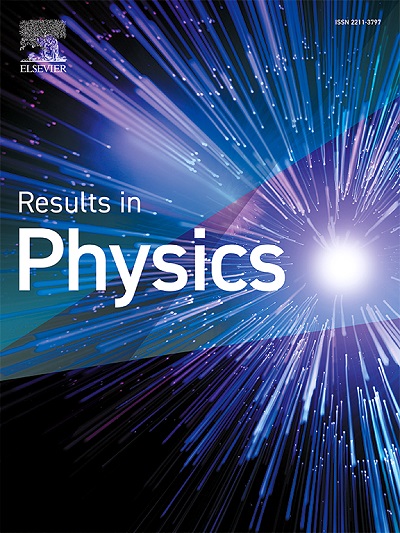Non-reciprocity of energy transfer derived from cubic stiffness-induced nonlinear phenomena
IF 4.6
2区 物理与天体物理
Q2 MATERIALS SCIENCE, MULTIDISCIPLINARY
引用次数: 0
Abstract
Introducing purely nonlinear elastic elements can induce rich dynamic behaviors, such as bifurcations, jumps and isolated resonance curves, to linear systems. Therefore, these elements are suitable for constructing strong non-reciprocity of vibration energy transfer. First, the energy transfer along reciprocal directions in a three-degree-of-freedom system is investigated, where three oscillators are connected by cubic springs. The semi-analytical solutions of the system are obtained using the complexification-averaging method and the least squares method. The results are compared against numerical solutions obtained by the Runge-Kutta method. The excitation amplitude range that produces strong non-reciprocity of vibration energy is analyzed. The jump phenomenon under combined excitation is investigated, and a trigger method for constructing non-reciprocity using an impulse is proposed. Then, an oscillator chain with cubic stiffness and scaling parameters is embedded into a multi-degree-of-freedom linear oscillator system to further explore the effect of cubic stiffness. Energy transfer along two directions is compared by exciting the leftmost oscillator and the rightmost oscillator. Moreover, the trigger effect of the impulse on non-reciprocity is demonstrated. The results show significant differences in vibration energy transfer within three distinct frequency bands. The critical points between reciprocal and non-reciprocal states are obtained, and the three stages of reciprocity related to excitation amplitude are analyzed. Lastly, the modulation effect of the cubic stiffness on non-reciprocity is conducted by comparing the energy of the output oscillator.
由三次刚度非线性现象导出的能量传递的非互易性
引入纯非线性弹性单元可以引起线性系统丰富的动力学行为,如分岔、跳变和孤立共振曲线。因此,这些单元适用于构造振动能量传递的强非互易性。首先,研究了三自由度系统中三个振子由三次弹簧连接的能量沿反方向传递。利用复化平均法和最小二乘法得到了系统的半解析解。结果与龙格-库塔法的数值解进行了比较。分析了产生强非互易振动能量的激励幅值范围。研究了组合激励下的跳变现象,提出了一种利用脉冲构造非互易的触发方法。然后,将具有三次刚度和标度参数的振子链嵌入到多自由度线性振子系统中,进一步探讨三次刚度的影响。通过激发最左边的振子和最右边的振子,比较了沿两个方向的能量传递。此外,还证明了脉冲对非互易的触发效应。结果表明,在三个不同频带内,振动能量传递存在显著差异。得到了互易和非互易状态之间的临界点,分析了与激励幅值相关的互易的三个阶段。最后,通过比较输出振子的能量,分析了三次刚度对非互易的调制作用。
本文章由计算机程序翻译,如有差异,请以英文原文为准。
求助全文
约1分钟内获得全文
求助全文
来源期刊

Results in Physics
MATERIALS SCIENCE, MULTIDISCIPLINARYPHYSIC-PHYSICS, MULTIDISCIPLINARY
CiteScore
8.70
自引率
9.40%
发文量
754
审稿时长
50 days
期刊介绍:
Results in Physics is an open access journal offering authors the opportunity to publish in all fundamental and interdisciplinary areas of physics, materials science, and applied physics. Papers of a theoretical, computational, and experimental nature are all welcome. Results in Physics accepts papers that are scientifically sound, technically correct and provide valuable new knowledge to the physics community. Topics such as three-dimensional flow and magnetohydrodynamics are not within the scope of Results in Physics.
Results in Physics welcomes three types of papers:
1. Full research papers
2. Microarticles: very short papers, no longer than two pages. They may consist of a single, but well-described piece of information, such as:
- Data and/or a plot plus a description
- Description of a new method or instrumentation
- Negative results
- Concept or design study
3. Letters to the Editor: Letters discussing a recent article published in Results in Physics are welcome. These are objective, constructive, or educational critiques of papers published in Results in Physics. Accepted letters will be sent to the author of the original paper for a response. Each letter and response is published together. Letters should be received within 8 weeks of the article''s publication. They should not exceed 750 words of text and 10 references.
 求助内容:
求助内容: 应助结果提醒方式:
应助结果提醒方式:


